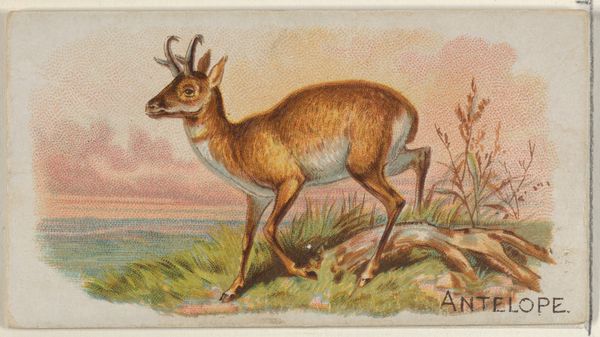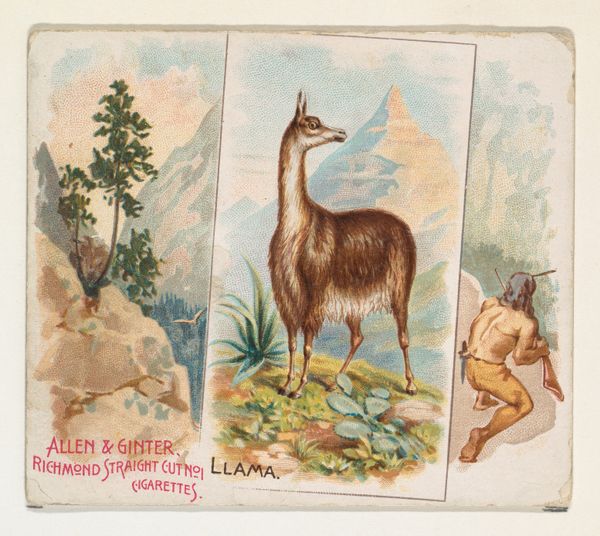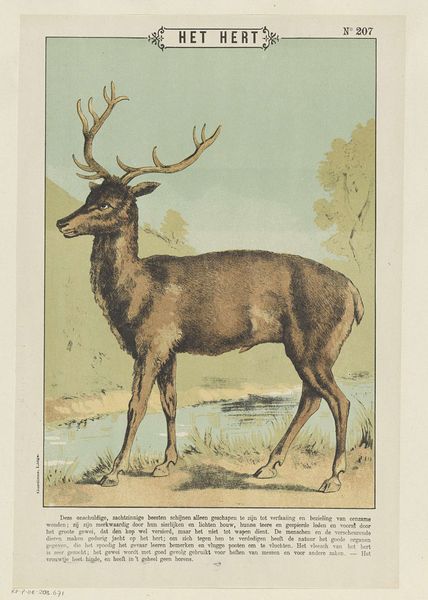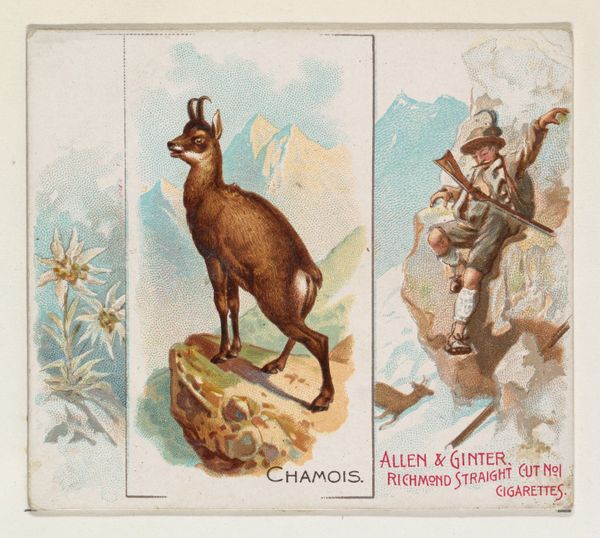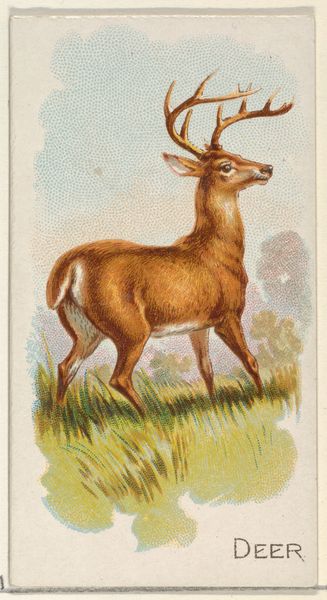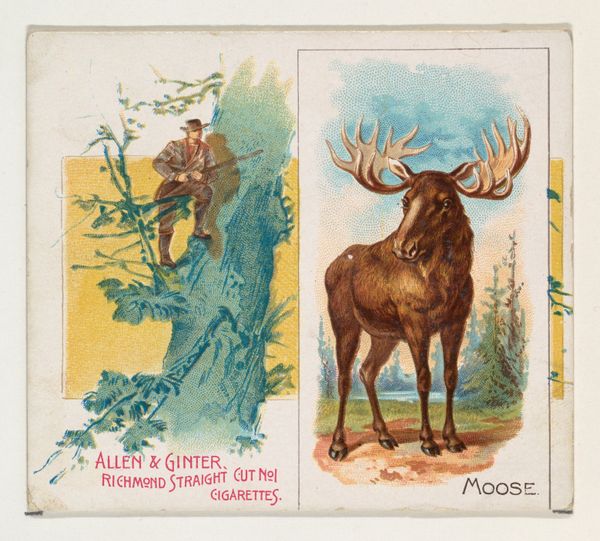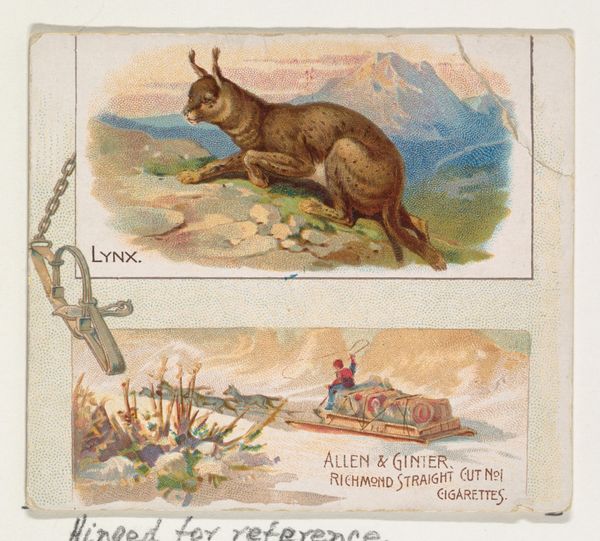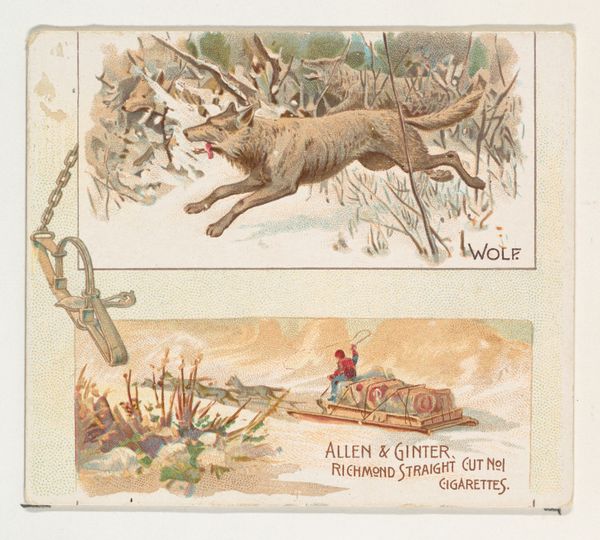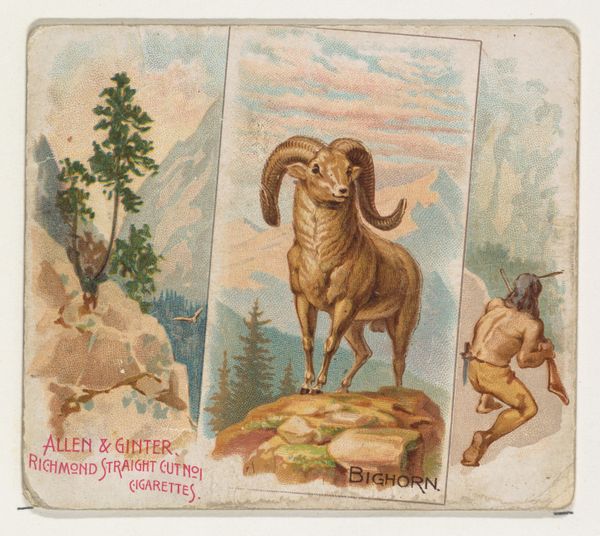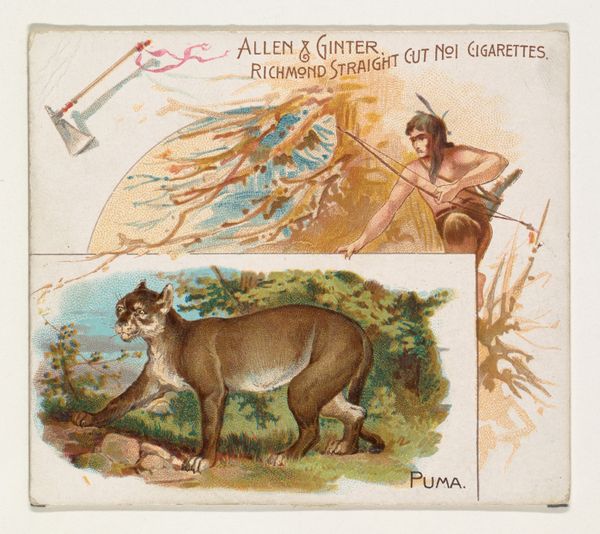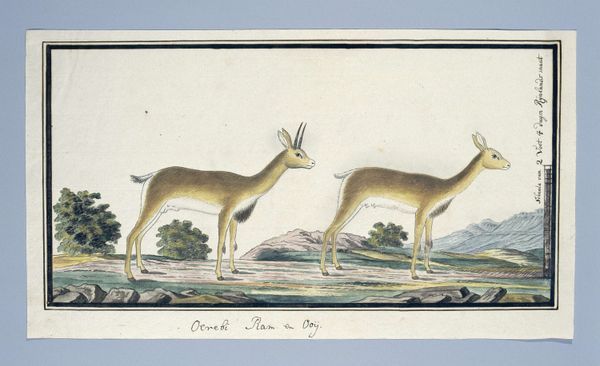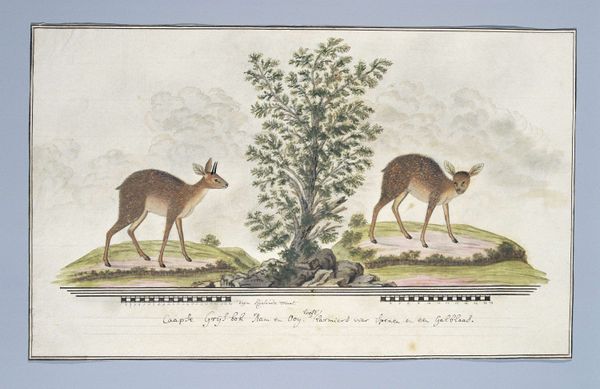
Antelope, from Quadrupeds series (N41) for Allen & Ginter Cigarettes 1890
0:00
0:00
drawing, coloured-pencil, print
#
drawing
#
coloured-pencil
# print
#
impressionism
#
landscape
#
coloured pencil
Dimensions: Sheet: 2 7/8 x 3 1/4 in. (7.3 x 8.3 cm)
Copyright: Public Domain
Curator: My first impression? A study in contrasts. The rendering is almost cartoonish but creates a visually pleasing effect. The layering of landscape on top of a primary field gives a dreamy sensation. Editor: Indeed. What we're seeing is "Antelope, from Quadrupeds series (N41) for Allen & Ginter Cigarettes," dating back to 1890. It's a color print enhanced with colored pencils, part of a larger marketing initiative by the cigarette company. These cards were inserted into packs as collectables, produced en masse. The cards were part of an intense labor operation involving factory workers, illustrators, and, of course, tobacco farmers. Curator: I'm struck by the antelope itself—the subtle gradations of color in its coat. The light seems to catch it perfectly, highlighting its form, in ways that point to naturalistic depiction. But how can we interpret that, given the ultimate commercial purpose here? The color relationships between animal, turtle and the landscapes pull everything together, like different frames. Editor: This brings us to the social function, and meaning created by these pieces: This particular illustration isn't trying to create “high art.” It exists to sell cigarettes by attaching this product to ideas about nature and collecting—part of the turn-of-the-century obsession with taxonomy, knowledge and display. This wasn't made to go into a museum—at least not originally! Curator: But surely the skill involved matters? Look at the economical way the artist defines space—sky, water, grassy bank—all contributing to a unified sense of place and calm. There's also an aesthetic appreciation happening—something beyond mere marketing. Even if it exploits the picturesque, the print nevertheless offers real engagement with line, form and perspective. Editor: I agree. But I look beyond just the art: what conditions and historical factors came together to produce this? Where were these cards consumed? The artist is working with new mechanical reproduction processes that ultimately flatten detail in service of distributing them as broadly as possible—perhaps it's both a functional collectible and a fleeting image of mass consumption. Curator: A fascinating push and pull. I think looking at this reminds us that even the humblest images can reveal surprising depths, both artistic and historical. Editor: Yes, the antelope appears humble but opens pathways to consider social production. Another fine discovery!
Comments
No comments
Be the first to comment and join the conversation on the ultimate creative platform.
